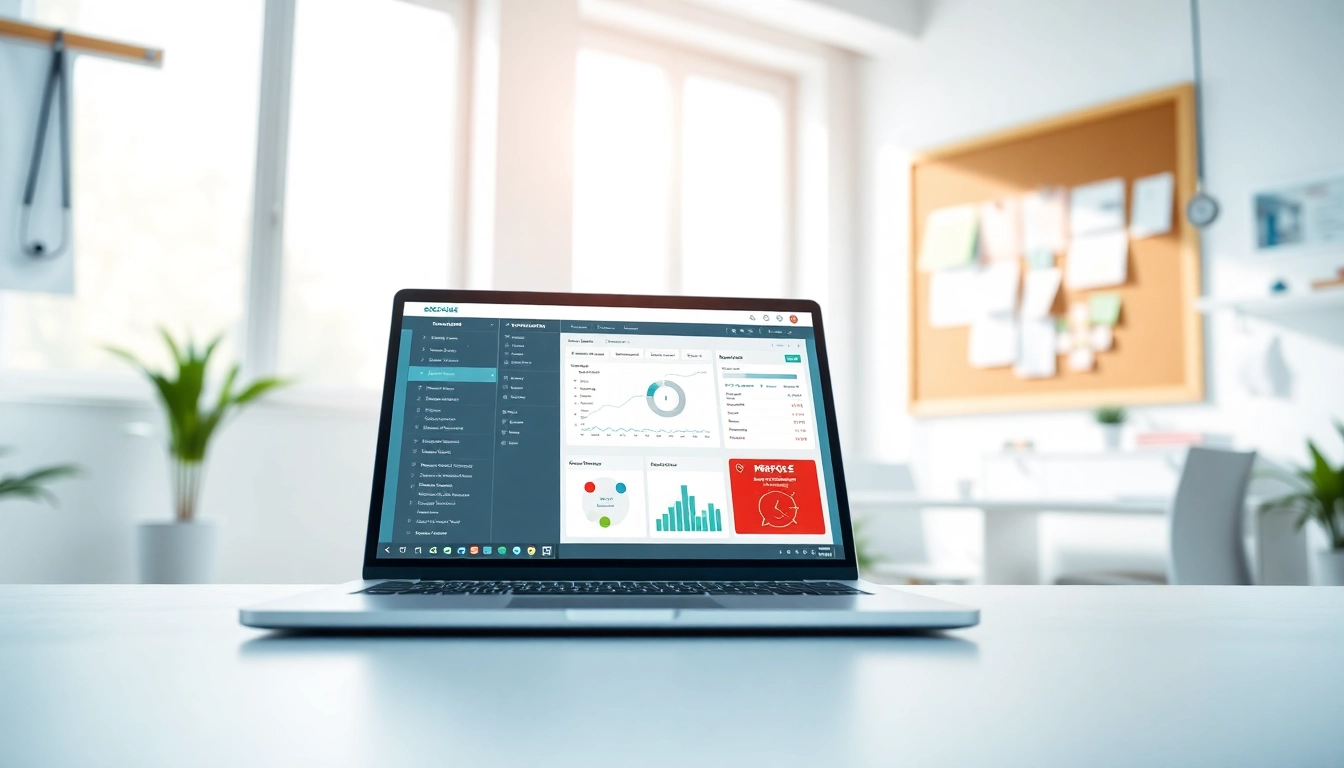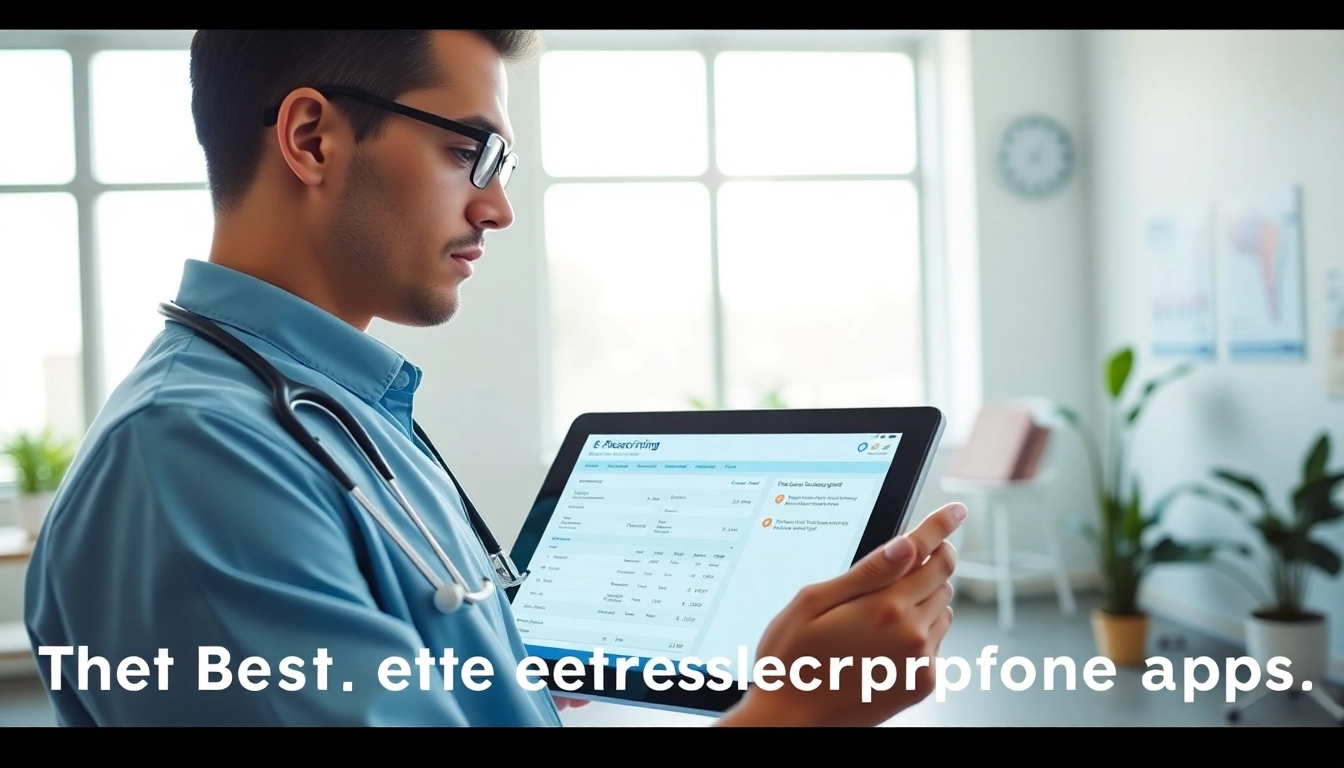Understanding E-Prescribing
What is E-Prescribing?
E-prescribing, or electronic prescribing, is the digital way of generating and transmitting medication prescriptions directly from healthcare providers to pharmacies. This modern solution streamlines the traditionally cumbersome and error-prone process of writing and delivering paper prescriptions. With the integration of sophisticated software systems, e-prescribing not only enhances accuracy but also speeds up the prescription process, benefiting both practitioners and patients. Whether it’s a routine medication refill or a complex new treatment plan, e-prescribing solutions empower providers to manage prescriptions promptly and securely. Many healthcare professionals are now seeking best eprescription apps that can fit seamlessly into their workflows.
Benefits of E-Prescribing for Healthcare Providers
The transition from traditional paper prescriptions to e-prescribing offers numerous benefits to healthcare providers, including:
- Increased Efficiency: E-prescribing eliminates the time-consuming process of handwriting prescriptions and reduces the need for phone calls or faxes to pharmacies.
- Reduced Errors: Digital prescriptions minimize handwriting misunderstandings and drug interactions by providing built-in checks and balances.
- Improved Communication: Enhanced connectivity between healthcare providers and pharmacies ensures that any issues regarding prescriptions can be quickly resolved.
- Cost-Effectiveness: By reducing the time spent on prescriptions and prescription errors, e-prescribing can lower healthcare costs for providers and patients alike.
- Improved Patient Outcomes: Quick access to the right prescription medications can lead to better compliance, reduced hospital visits, and improved overall health outcomes.
How E-Prescribing Enhances Patient Care
E-prescribing directly impacts patient care in several critical ways:
- Convenience: Patients can receive prescriptions directly to their chosen pharmacy, often making it possible to pick up medications without delay.
- Better Compliance: E-prescriptions can include automatic refills, reminders, and patient education materials, empowering patients to adhere to their treatment plans.
- Enhanced Safety: The system alerts healthcare providers to potential drug interactions, allergies, or other vital information, significantly reducing adverse drug events.
Key Features of Best E-Prescription Apps
Streamlined Prescription Processes
The best e-prescription apps simplify the prescription process with intuitive workflows that help healthcare providers manage patient medications effectively. Features such as quick access to patient histories, streamlined workflows to manage prescriptions, and a secure messaging system can help practitioners handle patient needs efficiently. Advanced filtering options allow providers to find medications quickly, which can significantly speed up office visits and consultations.
User-Friendly Interface for Practitioners
Ease of use is a critical factor for healthcare providers when choosing e-prescribing solutions. A user-friendly interface ensures that practitioners can navigate the app without extensive training. Well-designed dashboards, clear navigation menus, and quick-access buttons for common tasks contribute to a positive user experience. When clinicians spend less time on administrative tasks, they can focus more on patient care.
Integration with Electronic Health Records
Integration with Electronic Health Records (EHR) is a necessary feature of the best e-prescribing apps. This allows for seamless data sharing between prescription and patient health information, improving care continuity and coordination. Providers can view a patient’s full medical history, including allergies, past medications, and lifestyle factors, helping them make informed prescribing decisions.
Top Contenders in Best E-Prescription Apps
Comparative Analysis of Leading Apps
Several e-prescribing apps have gained acclaim based on functionality, efficiency, and user feedback. To determine the best options for healthcare practices, a comparative analysis can provide insights into features, usability, and overall effectiveness:
- Functionalities: Compare the core functionalities of each app such as prescription tracking, automatic refill management, and voice recognition capabilities.
- User Experience: Evaluate the user experience through trials or by reviewing user testimonials and professional evaluations.
- Compatibility: Determine the ease of integration with various EHR systems, as compatibility is crucial for maximizing the app’s potential.
User Ratings and Reviews Overview
User ratings play an essential role in evaluating e-prescribing apps. Reviews can offer firsthand insights into specific features, reliability, and customer support. Healthcare providers often post reviews on various software comparison sites and forums. Examining these ratings will provide a clearer picture of which applications consistently deliver satisfaction.
Cost Considerations and Value Assessment
When selecting an e-prescribing app, cost is a significant consideration. Many apps offer tiered pricing structures based on the number of users or features included. Performing a value assessment relative to the benefits gained from using the app can help determine the most cost-effective option. Providers should also consider potential cost savings from improved operational efficiency and reduced prescription errors.
Implementing E-Prescribing Solutions
Steps to Integrate E-Prescribing into Practice
Integrating e-prescribing into a healthcare practice requires careful planning and execution. Here are essential steps to consider:
- Assessment: Evaluate the current prescription process and identify areas for improvement.
- Selection: Choose the e-prescribing app that aligns with practice needs, budget, and EHR compatibility.
- Implementation: Work with the IT team or vendor to set up the software and ensure all necessary integrations are established.
- Testing: Pilot the app with a small group of users to identify any hiccups and ensure functionality before a full rollout.
- Launch & Feedback: Officially launch the e-prescribing system to all users and gather feedback for further adjustments.
Training Staff on Best E-Prescription Apps
Comprehensive training for staff on the best e-prescription apps is essential to fostering a smooth transition. Training sessions should cover:
- Navigation: Detailed walkthroughs of the app’s interface, including all primary functionalities.
- Use Cases: Scenarios that reflect the typical workflow involving e-prescribing for different types of prescriptions.
- Support Channels: Information on where staff can seek help or report issues during the initial stages of adoption.
Measuring Success and User Satisfaction
Measuring the success of the e-prescribing implementation is crucial. Metrics to consider include:
- Reduction in Errors: Monitoring prescription errors before and after implementation can reveal the effectiveness of the new system.
- User Adoption Rates: Assess how quickly and effectively staff have adopted the e-prescribing software.
- Patient Feedback: Collecting feedback from patients regarding their medication experiences can indicate areas of improvement or highlight success stories.
Future Trends in E-Prescribing
The Role of Technology in Prescribing
The world of e-prescribing is evolving with technology advancements continuously transforming various aspects of healthcare. The integration of biometrics for identity verification, machine learning for diagnosing conditions, and the use of big data analytics are reshaping how prescriptions are written, processed, and managed. These technologies not only enhance safety but also tailor medication management to individual patient profiles.
Potential Impact of AI on E-Prescribing
Artificial intelligence is poised to have a profound impact on e-prescribing. The future may see AI-driven recommendations based on patients’ comprehensive medical histories, enabling providers to make more informed prescribing decisions. Automated alerts for potential side effects or drug interactions could further enhance the safety of prescribing practices.
Regulatory Considerations for E-Prescribing
Given the sensitive nature of health data, e-prescribing is subject to strict regulatory oversight. Continued adherence to regulations such as HIPAA and state-specific laws is imperative for maintaining patient confidentiality and ensuring compliance. As e-prescribing practices evolve, staying abreast of regulatory changes will be vital for healthcare practices to navigate the complexities effectively.















Leave a Reply